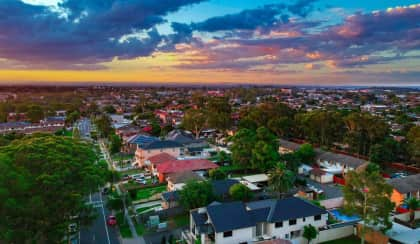Is the property market rebound short-lived?
While there have been emerging green shoots of a property market rebound in the first half of 2023, a new report warns headwinds expected in the second half may render the recovery short-lived.

Herron Todd White’s latest Month in Review report noted most capital cities across Australia saw price gains in the first six months, signalling a property market rebound.
CoreLogic’s data showed every Australian capital aside from Hobart recorded value increases in June.
Australian house prices also notched the fourth consecutive month of value increases by recording a median rise of 1.7 per cent at the end of the first half of the year.
But despite the positive movement in values, Ben Asau, HTW’s national director of residential, said the market is not completely out of the woods.
While he acknowledged the Reserve Bank’s wait-and-see approach with regards to cash hikes has given the market some reprieve, he highlighted most commentators believe there are more rate hikes to come in the near term.
“The RBA left rates on hold in July, but their comments included a desire to observe how previous increases were affecting the market,” he added.
Minutes of the board’s monetary policy meeting from 7 July revealed record-high mortgage payments were factored into the central bank’s decision to hold the cash rate.
However, records also showed the board noted future risks of further rate increases loomed on the horizon, with inflation not expected to return to the target range until mid-2025.
Mr Asau noted the kicking-the-can-down-the-road stance held by the RBA aligns with major lenders’ recent indications of rising stress among their borrower cohorts.
“There has been a lot of discussion around the number of borrowers coming off attractive fixed rate loans and onto significantly higher variable rates throughout 2023.
“Perhaps the impact will not be as immediate as some had predicted given borrowers have already demonstrated their resilience,” he said.
Notably, a recent study from Roy Morgan showed an estimated 1.38 million Australian mortgage holders were deemed at risk of experiencing mortgage stress in the three months to April 2023 – a figure that represents almost one-third (27.8 per cent) of all mortgage holders in the country.
Mr Esau said the question now is how long borrowers can hold on at these new rates and how they can face the threat of further imminent rises.
“The lag effect of interest rate increases may not just be the time taken for the new rates to be implemented by lenders but also how long stressed home owners can stay liquid after the shock of this rate rise cycle,” he said.
He warned the impact may also escalate if there are any significant increases in unemployment over the next six to 12 months.
Mr Esau noted borrowers are closely being watched for signs of mortgage stress, including via reduced savings and spending as well as rising arrears.
He singled out new listings as a potential addition to the list of key metrics to watch out for throughout the second half of the year, as they’re currently below long-term averages.
“If we see increases – particularly in certain geographic or market sectors – this could lead to sharper declines in values,” Mr Esau said.
While the tight rental market may help absorb listings, he pointed out buyers will continue to see their purchasing power weaken with higher rates impacting serviceability requirements due to potential future rate rises.
Rental crisis clouds outlook for market trends
Property values continued to face headwinds, but with rental shortage tipped to remain unresolved in the short term, it’s impacting both tenants and CPI (inflation), the report said.
Mr Esau said rental price increases are putting pressure on tenants. “Calls for greater tenant protections are likely to amplify and rising interest rates will continue to put pressure on mortgaged landlords to pass these costs onto tenants,” he added.
He also argued initiatives to increase supply, including affordable housing projects and converting commercial buildings into residential, will also not provide any immediate relief.
“As policymakers continue to look for short-term solutions to the rental shortage, we expect to see more focus on short-stay rentals and vacant investment properties, particularly within metro localities,” he added.
Such policy changes, he said, would aim to disincentivise short-term usage or vacancies as well as push this stock back into the long-term rental market.
“Whilst these types of initiatives in isolation won’t solve the problem, they may provide opportunities to demonstrate progress against a backdrop of growing public concern,” Mr Esau said.
However, he cautioned that such measures might have the unintended effect of deterring investors from residential property, which is undesirable in these competitive markets.
“All in all, the next phase of our post-pandemic economy has created a precarious remainder of 2023 for the residential property market,” he concluded.
